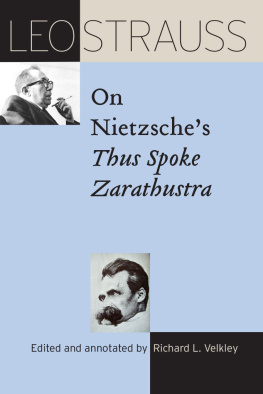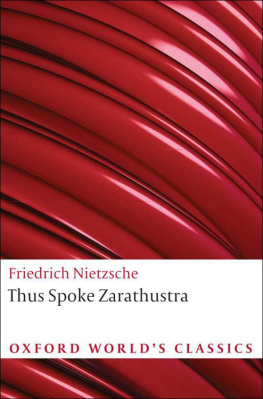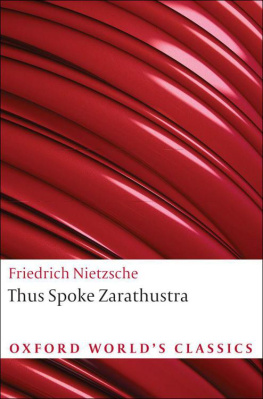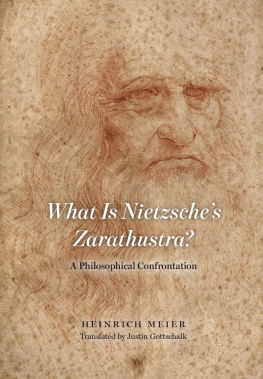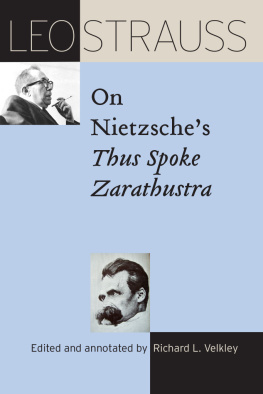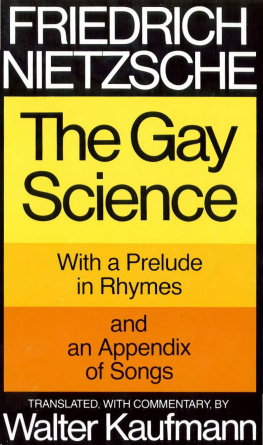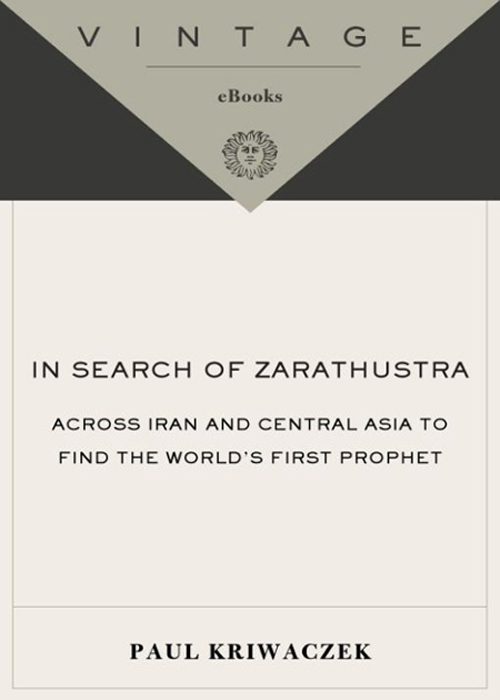
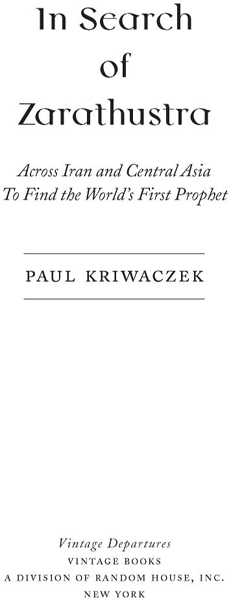
Table of Contents
With grateful thanks to Mandy Little and Toby Mundy,
who conspired to persuade me to bite of more than I
thought I could chew, and to Benjamin Buchan, who picked
up the baton and carried it to the finishing line
International acclaim for Paul Kriwaczeks
In Search of Zarathustra
A delightful, informative quest. DailyMail
Outstanding.... Lively and fast-paced.... This is the best and most thorough survey of Zoroastrianism to date. PublishersWeekly, starred review
An original, exacting, and many-faceted inquiry.... Fresh and consistently perceptive and surprising. Booklist
Brilliant.... Compelling.... A lively, always captivating blend of comparative religion, cultural history, literary travel and eccentric trivia that deserves a broad readership among the spiritually inclined. KirkusReviews
Part travel story, part history, part philosophical musing, InSearch of Zarathustra is a relentlessly engaging look at a prophet without whom our modern religions might have turned out quite differently. TheDaily Camera
No, I dont sing anymore,
They say its a sin!
In my ancient beautiful homeland,
Which is older than history itself,
Who decided that singing is a crime
Though Zarathustra fertilized this land with his songs?
(IRANIAN POPULAR SINGER GOOGOOSH)
Illustrations
Faade of Islamic college, Samarkand
Friedrich Wilhelm Nietzsche
The village of Sils Maria
Montsgur, southern France
The citadel at Montsgur
Carcassonne
Battered tower blocks in Sarajevo
Rock carving of the victorious emperor Shapur
Ruins of the Temple of Mithras near Hadrians Wall
Reconstruction of the Mithraic Temple
Relief carving at Persepolis
The tomb of Daniel in western Iran
Persepolis
Tomb of Cyrus the Great at Pasagardae
Dariuss rock relief at Behistun
Dariuss rock relief as the author found it
Close-up of Darius at Behistun
Archers of Cyruss palace guard
The Ishtar Gate of Babylon
The haft-sin table in a Tehran hotel
Alexander the Greats lion at Hamadan
Esther and Mordecais tomb at Hamadan
Relief of Darius the Great with his courtiers
Zoroastrian temple in Yazd
Excavations at Ecbatana
The valley of Bamian, Afghanistan
The wedding tree on the Silk Road, Tajikistan
A Zoroastrian shrine, central Iran
CREDITS
The author and publishers would like to thank the following for their permission to reproduce pictures: Mary Evans Picture Library, 2; Hulton Archive, 3; Museum of Antiquities, Newcastle upon Tyne, 10; Weidenfeld Archives, 11, 17; Yassavoli Publications, Tehran, 15; Bildarchiv Steffens, Mainz/Dietmar Riemann, 19.
Introduction
Hello. Im Paul Kriwaczek. Thanks for coming on this journey with me. I hope youll find it an interesting and enjoyable trip.
I had been practising this little speech in Farsithe modern Persian languageready to deliver it to the young man who was to be my fixer, interpreter, language tutor, guide, travelling companion and friend on my whirlwind tour of Iran. As it happened, we missed each other in the crowded airport concourse, and I was ignominiously reduced to seeking out the help desk and asking for his name to be called over the public address system. The woman behind the grille, who was wearing the ubiquitous Iranian chador, the long black coverall which must leave no hair or indoor clothing visible, yet who disconcerted me with her impeccable English, made the announcement. As I waited for some anxious minutes, I looked around the arrival hall to catch a first impression of what difference the Ayatollahs had made to Iran since I had last been here more than thirty years ago.
There was surprisingly little change, I decided. Tehrans Mehrabad airport and the crowd that thronged it seemed, if anything, rather more modern, more Western even, than the equivalent in Moscow or Bucharestlet alone Istanbul or Tashkent. No family was sitting with mats spread out, picnicking on the floor. No traveller was sleeping in a corner, wrapped in blankets, walled in among piles of string-netted vegetables. No bearded ancient was trying to drag a goat through passport control. Only the occasional distinguished-looking clergyman in grey gown and round white turban, or the occasional woman preparing for a flight by donning a headscarf in place of a chador, suggested the religious dimension of the Islamic Republic of the year 2000.
Then suddenly there was Hossein, attended by his brother-in-law who was to be our driver, rushing up and greeting me effusively in his perfect American, banishing all opportunity for my carefully prepared Farsi greeting. As they swept me out of the terminal towards the clapped-out old Fiat in which we were to spend most of the following weeks, I began to feel a little guilty. I hadnt expected Hosseins enthusiasm and, concerned that interest in Persias pre-Muslim past might not go down at all well among Irans famously severe Islamists, I had not mentioned the real purpose of my trip during our preliminary telephone conversations, avoiding any mention of Zoroastrianism or its ancient Persian founder-prophet Zarathustra, and only saying that I wanted to explore Irans cultural heritage. I neednt have worried. Iranians, as it turned out, are just as proud of what they were before they were Muslims, as they are passionate for their version of the Islamic faith. The very name of my entry-point was an auspicious sign. The ruling theocrats have done nothing to change it, even though Mehrabad, the name of the village whose site is now occupied by the airport, can be translated as Founded by, or for, Mithraand Mithra is a very un-Islamic figure, an attendant of Ahura Mazda, the one and only God of the Prophet Zarathustras teachings.
Of course, words and names nearly always lose their original associations over time. Just as few, if any, English speakers can be aware of naming the gods Woden or Thor when speaking of Wednesday or Thursday, so no modern Tehrani is likely to be conscious of invoking a pagan power when speaking of Mehrabad, or using any of the common words and expressions that hide within them the sacred name: mehraban, meaning kind, for example, is literally observant to Mithra. None the less, the Ayatollahs had thought nothing of trying to abolish the name of the city of Kermanshah just because they didnt like to hear the sound of the word Shah, and I had fully expected the airport, like so many other Iranian landmarks, to have been renamed for the revolution or its martyrs. Keeping the name Mehrabad was a signal that the Islamic rulers of todays Iran were not denying the link back to their pre-Islamic past.
This was to be my third journey to the Iranian world. I had spent time in Iran in the early 1960s, passing through in the days when the Shah still sat on the peacock throne and former premier Mossadegh, internationally vilified for turning up to public functions in what the Western press thought were pyjamas and carpet slippers, was still alivethough under house arrest. Having left Iran, a chance encounter in Kabul, capital of Irans eastern neighbour Afghanistan, would lead to my living in that semi-feudal kingdom, as it still was then, for the next two years.
Next page

